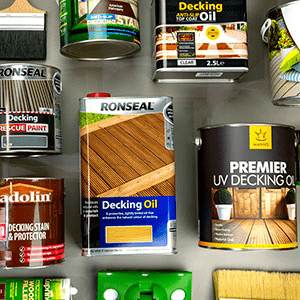General F.A.Q
What is the difference between wax polish, oil and varnish?
- Wood Wax: wood waxes look really good but are not recommended for floors because of their limited durability. waxes are ideally suited to furniture, such as wardrobes or wooden areas such as skirting boards and banisters, that do no require as much protection. Some customers do use wax on floors but do bear in mind that it needs more maintenance.
- Wood Oil: Offering more durability than a wax polish, Wood oils are easy to work with, very easy to repair (sand down scratches then reapply) but they do have slower drying times.
- Wood Varnish: Forming a seal on the surface of the wood, varnishes are the strongest of all wood finishes. There are two categories of varnish available, solvent-based (lacquers) and water-based. Water-based varnishes are more commonly used and are every bit as good as solvent-based varnishes these days. A 2 pack varnish is the strongest form of varnish and is ideal for high traffic areas where durability is of the utmost importance such as bar tops (the more coats the better). For most projects, such as a shop floor, our extra tough clear varnish is more than adequate and we consistently receive excellent feedback for this product.
How can we tell if the wood has been waxed, oiled or varnished?
If a wooden surface looks like it already has been finished with a product it is always a good idea to find out what that finish is as it may affect which product you should apply to the wood. For example, you could not really apply an oil over a varnished floor, but an existing floor that has been oiled can be re-coated with an oil (once it has been cleaned of course!). Here's a few pointers to find out what your wood has been finished with:
- Waxed surfaces If it has wax on it you can scrape it lightly with your finger nail (once it has been cleaned). You may get a little wax under your nail. Also you can try buffing it with a cloth. Most surfaces will become shinier once buffed, but a waxed surface will substantially increase in shine.
- Oiled surfaces Generally speaking oiled surfaces are not that glossy. If you stand something on the surface of an oiled surface it will not have much of a reflection. Instead you are likely to see a fuzzy image reflected. You can also try putting a little white spirit on a small unnoticeable area and if it dissolves the surface coating then it is likely to be an oil, please note however that this may leave a white spot. White spirit will also dissolve most wax polishes so check the above advice (waxed surfaces) before trying this.
- Varnished Surfaces A varnished surface will be hard to the touch (it will make a clicking sound when you knock your nails on it) and will have a reflective surface. Even a matt varnish will reflect the light more than an oiled surface. If something is stood on the surface (with a window in view behind it) then the reflection is clearly visible. A satin or gloss varnish will have a very clear reflection of anything that is held up to the surface.
How would you describe different sheens?
- Matt sheen. No shine or very little shine. However 3 coats of a matt varnish will produce a sheen that is almost the equivalent of a satin.
- Satin sheen. Another way to describe satin is eggshell. In other words the sheen level is about the same as the surface of an egg when 1 coat has been applied. 2 coats will be a bit shinier.
- Gloss sheen. Very shiny, if you hold an object against a piece of wood that has had 2-3 coats of a gloss varnish applied there will be a clear reflection of that product in the wood.
What is the advantage of an oil?
The main advantage of oil is that they are the easiest of all wood finishes to repair. A patch repair, for example, where a drink's stain has occurred can easily be removed by simply sanding just the affected area and applying more oil.
What is the advantage of a wax?
A wax looks really nice, with more of a sheen than a gloss. It can be re-waxed as many times as you like and buffed until the required sheen level is obtained or indeed not buffed if a low sheen is preferred.
What is the advantage of a varnish?
It is hard wearing and easily wiped down with damp cloths.
Is there a difference between a lacquer and a varnish?
No, the trade tend to refer to them as "lacquers" and the public tend to refer to them as "varnishes".
What type of wood stain do I need?
How do you choose the right wood stains for the job? It's something we're asked all the time. Thankfully there are some awesome products specially designed to cater for different wood types, finishes and situations. How do you choose? To give you a helping hand, our product pages make it nice and clear which products are suitable for what type of wood and project. We've also written a useful blog post about choosing the right kind of wood stain.
What is the best way to match different coloured woods?
By using a product from the same range on each type of wood, that needs to be matched, you can obtain a closer colour match. Where possible, it is best to use a clear coating on the darkest wood and a coloured coating on the lightest wood. Oil is a good option because it penetrates well into the wood, colouring it and protecting it at the same time. With an oil, you can also apply a second coloured coat if the match is not close enough after the first attempt. Hard wax oil is a superior oil that is also available in colours. For example, to match new pine to old pine use 1 part whiskey hard wax oil to 1 part clear hard wax oil on the new wood and just clear on the old wood.
What if a wax isn't durable enough and I want a clear finish?
A Wood Varnish or a Hard Wax Oil offer a clear alternative to the wax products. The difference is that they will slightly darken the colour of the wood, applying a little water to the wood will give you an indication of the final finish. We have had samples of varnishes that claim to keep the wood "Looking exactly as it is before applying the varnish" but they don't actually work. If you know of a product that does keep the wood looking the same but protected then we would love to hear from you. N.B. There is a product called Bona Naturale that is as clear as you can get but it is well over £100 for a 5L tub which will cover about 3 coats on an area that is 15 square metres. We can obtain this product if it interests you. Roughly speaking it will make your wood look somewhere between how it is before anything has been applied to it and how it looks once it has been wetted with water.
What is the difference between a dye and a stain?
Essentially there is no difference between a stain and a dye, they are both coloured liquids that don't offer a sheen or protection, they simply colour the wood. Our dyes are very concentrated and are available in the primary colours. Sometimes a product may have the word stain in its' title even though it is a protective coating also. However we believe that a stain should simply stain the wood and not do anything else because a better result will be achieved if clear coats are applied on top of a stain.
What is the benefit of a water-based stain?
They are well priced and very easy to apply. They have very little smell and a large range of colours are available.
What is the benefit of a solvent-based stain?
They are quick drying (about 5 minutes) and the grain of the wood is not raised.
Is grain raising (with water based products) something to be concerned about?
In short - no, but it is a question of personal taste. The grain doesn't feel rough to the touch, it's more of a textured feel. In other words the pattern of the wood can be felt through the wood finish. Some customers really like to be able to feel the wood. If several coats of varnish are being applied then grain raising is not really an issue because the varnish tends to seal over the grain that has been raised, thus creating a smooth surface.
What is the best way of achieving a white wood finish?
White wood finishes can be varied in terms of the type of white, along with intensity, ranging from a subtle white wash where the wood is still clearly visible, through to a solid opaque white finish. There are a number of products available to help achieve the desired look, details of which can be found in our blog post about interior white wood finishes.
How can I best achieve a black wood finish?
Black wood finishes can differ greatly in terms of how black and how opaque the final look will be. There are a wide range of products for both interior and exterior wood to help achieve almost any look, details of which can be found in our blog post that covers interior and exterior black wood finishes.
How long will my wooden garden furniture last?
How long is a piece of string? The better you look after your wooden garden furniture, the longer it'll last. Why not check out our blog post about exterior furniture maintenance?
Can't see the answer you were looking for?
Ask us a questionDisclaimer: Whilst every attempt has been made to provide product information that is as accurate as possible, it's important to clarify that trees and the wood that they produce can be affected by many factors. For example, the same species of tree grown in the same wood, even in close proximity, will be affected by age along with the amount of sunlight and water they receive. Other naturally occurring biological and environmental factors will also influence the density and grain of the wood as well as the moisture and oil content of the timber. No two trees are the same, meaning each piece of wood has the potential to look and react differently to the same wood finish. For example, product adhesion, colour variations, absorption rates and sheen levels. It is for this reason that we always strongly recommend carrying out test areas before starting any project


